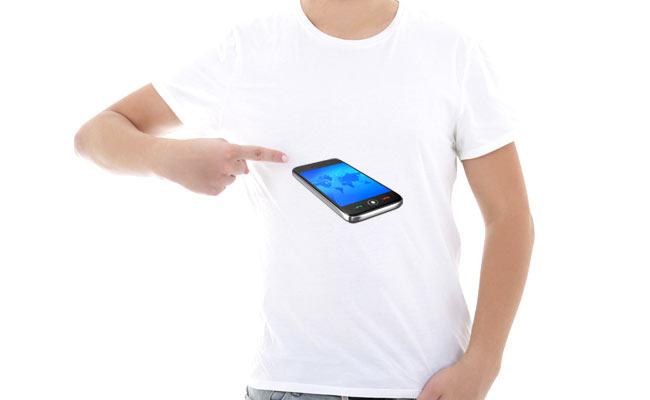Welcome to the world of "spaser" technology that can make mobile phones so small, efficient, and flexible that these could be printed on clothing

Sydney: What if you are told that you can print your smart phone on your t-shirt and walk around?
Welcome to the world of "spaser" technology that can make mobile phones so small, efficient, and flexible that these could be printed on clothing.
ADVERTISEMENT

Representational picture
A team of researchers from Melbourne-based Monash University’s department of electrical and computer systems engineering (ECSE) has modelled the world’s first spaser (surface plasmon amplification by stimulated emission of radiation) to be made completely of carbon.
A spaser is effectively a nanoscale laser or nanolaser.
It emits a beam of light through the vibration of free electrons, rather than the space-consuming electromagnetic wave emission process of a traditional laser.
“Other spasers designed to date are made of gold or silver nanoparticles and semiconductor quantum dots while our device would be comprised of a graphene resonator and a carbon nanotube gain element,” said lead researcher Chanaka Rupasinghe.
The use of carbon means the spaser would be more robust and flexible, would operate at high temperatures, and be eco-friendly.
“Because of these properties, an extremely thin mobile phone could be printed on clothing,” Rupasinghe explained.
The researchers developed the spaser using graphene and carbon nanotubes.
They are more than a hundred times stronger than steel and can conduct heat and electricity much better than copper.
They can also withstand high temperatures.
Spaser-based devices can be used as an alternative to current transistor-based devices such as microprocessors, memory, and displays to overcome current miniaturising and bandwidth limitations.
“Graphene and carbon nanotubes can be used in applications where you need strong, lightweight, conducting, and thermally stable materials due to their outstanding mechanical, electrical and optical properties," Rupasinghe noted in a paper been published in the journal ACS Nano.
 Subscribe today by clicking the link and stay updated with the latest news!" Click here!
Subscribe today by clicking the link and stay updated with the latest news!" Click here!







